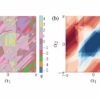The first Neanderthal draft genome was published in 2010. Since then, researchers from the Max Planck Institute for Evolutionary Anthropology have sequenced a further 18 genomes from 14 different archaeological sites throughout Eurasia. While these genomes have provided insights into the broader strokes of Neanderthal history, we still know little of individual Neanderthal communities.
To explore the social structure of Neanderthals, the researchers turned their attention to southern Siberia, a region that has previously been very fruitful for ancient DNA research—including the discovery of Denisovan hominin remains at the famous Denisova Cave. From work done at that site, we know that Neanderthals and Denisovans were present in this region over hundreds of thousands of years, and that Neanderthals and Denisovans have interacted with each other—as the finding of a child with a Denisovan father and a Neanderthal mother has shown.
First Neanderthal community
In their new study published in Nature, the researchers focused on the Neanderthal remains in Chagyrskaya and Okladnikov Caves, which are within 100 kilometers of Denisova Cave. Neanderthals briefly occupied these sites around 54,000 years ago, and multiple potentially contemporaneous Neanderthal remains had been recovered from their deposits. The researchers successfully



